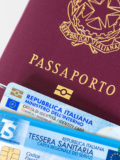Glossary eIDAS 2.0
eIDAS 2.0
What companies need to know now about the new eIDAS Regulation and the EUDI wallet
 Following the amendment to the eIDAS Regulation, the European Commission is moving forward with the development of an EU Digital Identity (EUDI) wallet. Although it only partially solves the challenge of digitised identification, this wallet will play an important role in identity verification in the future. Here, we summarise what companies need to know about the topic and how they can prepare for the digital wallet's introduction.
Following the amendment to the eIDAS Regulation, the European Commission is moving forward with the development of an EU Digital Identity (EUDI) wallet. Although it only partially solves the challenge of digitised identification, this wallet will play an important role in identity verification in the future. Here, we summarise what companies need to know about the topic and how they can prepare for the digital wallet's introduction.
The amendment to the Electronic Identification, Authentication and Trust Services (eIDAS) Regulation ('eIDAS 2.0') came into force on 20 May 2024. Through this amendment, the European Commission intends to build upon the original 2014 regulation. In particular, it intends to accelerate the introduction of a European Digital Identity (EUDI) wallet. In this article, we explain:
- What the EUDI wallet is and what it is used for
- The Commission's plans and objectives for the EUDI wallet
- The planned added value for citizens, public administrations and businesses
- What other changes eIDAS 2.0 will bring
- What businesses should expect from the EUDI wallet
The EUDI Wallet – The digital wallet
The EU Digital Identity (EUDI) Wallet is a digital identification solution introduced by the European Union (EU), similar to the one being pursued in Switzerland. It is intended to provide EU citizens with an electronic identity and simplified access to online services. As a digital storage device, it enables users to store important documents, such as ID cards, driving licences and health insurance cards, directly on their smartphones, allowing them to access these documents throughout Europe. They will also be able to use the wallet to authenticate their identity online and offline, and to create legally valid electronic signatures. Using a digital wallet will be optional, but free of charge.
In future, citizens could use the EUDI wallet to, for example:
- Open a bank account
- Register a SIM card
- Sign contracts electronically
- Use electronic health services
- Prove your identity and authorise digital payments, e.g. when shopping online
- Submit your tax return
Users should be able to access and manage all their identity documents stored in their digital wallet via a smartphone app. Specialised security measures ensure that only authorised individuals can access the wallet. Documents uploaded to the wallet are stored in an encrypted form on the smartphone to prevent unauthorised access.
Plans and objectives of the European Commission
The development of a harmonised digital identity in the form of an EU Digital Identity (EUDI) wallet that is recognised throughout Europe forms part of the EU's digital transformation strategy. With the introduction of eIDAS 2.0, momentum is now building behind this project. The aim is to enable cross-border online services. At the same time, the EU aims to increase acceptance of electronic identities (eIDs). The European Commission's plans are ambitious: by 2026, each EU member state must provide a digital ID wallet. It is expected that around 80 percent of all citizens will be using the new system by 2030.
Significance of the EUDI wallet for businesses, public administration and individuals
The added value of a functioning EUDI wallet system that is harmonised across the EU is obvious.
Firstly, using a digital identity offers considerable efficiency gains for all types of transactions where verification is required. Classic examples include transactions with financial service providers, such as opening bank accounts, applying for loans, and trading securities.
Public administration also benefits, as important administrative tasks can be carried out from home using a secure electronic identity, making them significantly cheaper and more efficient. This applies to tasks such as applying for a passport, filing a tax return or voting in a political election.
Finally, in the municipal sector, electronic identities could be incorporated into smart city projects, for example for identifying passengers on local public transport.
Further changes brought about by eIDAS 2.0
However, the introduction of an EUDI wallet is not the only change provided for by the new eIDAS Regulation. The existing regulations for electronic trust services are also being revised and strengthened. Another adjustment concerns electronic signatures, seals, and time stamps. According to eIDAS 2.0, these must be designed to be both interoperable and secure. The regulation also aims to strengthen the interconnectivity of different national identification systems. Finally, it sets out a number of new, stringent requirements for the data protection and security of an EUDI wallet. These are intended to ensure the confidentiality and integrity of the personal data stored on it.
eIDAS 2.0 from a business perspective
For businesses, the Commission's plans to introduce the EUDI wallet potentially offer many advantages – but also challenges. We show how businesses can best prepare themselves:
From observer to early adopter
Despite all the ambition, the development and spread of the wallet system will require one thing above all else: time. This gives companies the chance to prepare early for this significant technological innovation. They should therefore closely follow the development of the EUDI wallet. This will enable them to anticipate the change and adopt the system as early adopters within the scope of their possibilities. Only in this way can they gain the necessary experience to use the system with confidence as quickly as possible.
Continue to use classic auto-identification methods
However, to ensure long-term efficient identification, companies should not rely solely on new wallet systems. Instead, they should adopt a two-pronged approach and also offer conventional methods of identification using physical identity documents. These include classic auto-identification methods, such as those offered by PXL Vision. Ideally, companies should choose providers that accept a variety of identification methods. This is particularly important because people without access to electronic identification still need to be able to verify their identity. This is the only way to ensure their services remain accessible to a broad spectrum of customers.
Looking beyond the EU
In addition, companies should monitor developments in countries outside the EU and, in a similar manner, integrate the relevant national eID or wallet solutions into their processes. This is particularly important for countries such as Switzerland, which has strong economic ties with the EU. By doing so, companies can ensure that their customers enjoy a consistent level of service, regardless of their origin.
Useful additions to the EUDI wallet
Ultimately, companies must carefully verify that the implementation of the EUDI wallet aligns with their specific electronic identification requirements. Photo comparison is an important issue here. The new eIDAS Regulation mentions a photograph as a possible identification attribute within the wallet. However, for now, this remains optional. Therefore, companies that want or need photo matching in their identification practices should clarify early on how they can supplement their identification procedure based on an EUDI wallet with this feature.
Committed to the digital future
The introduction of eIDAS 2.0 and the EUDI wallet will present companies with various challenges in the coming years. However, offering a digital wallet will enable them to streamline their services in the future. However, they must also be prepared for the fact that the new technology will not be immediately available on the necessary scale, nor adopted by all potential users. Furthermore, individual companies' requirements for a secure identification procedure may exceed the capabilities of the planned EUDI wallet, as demonstrated by the issue of photo matching. Therefore, companies should be prepared to implement identification solutions that support both electronic and physical proof of identity, ensuring their services remain accessible to a diverse range of customers.
.png?width=126&height=101&name=logo%20(2).png)
.png?width=63&height=51&name=logo%20(6).png)




